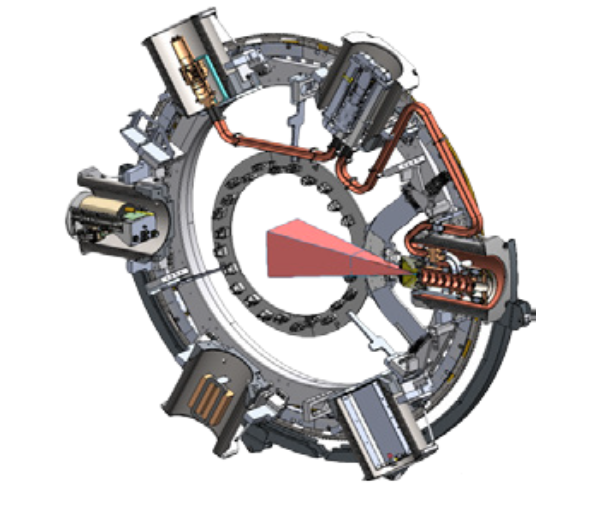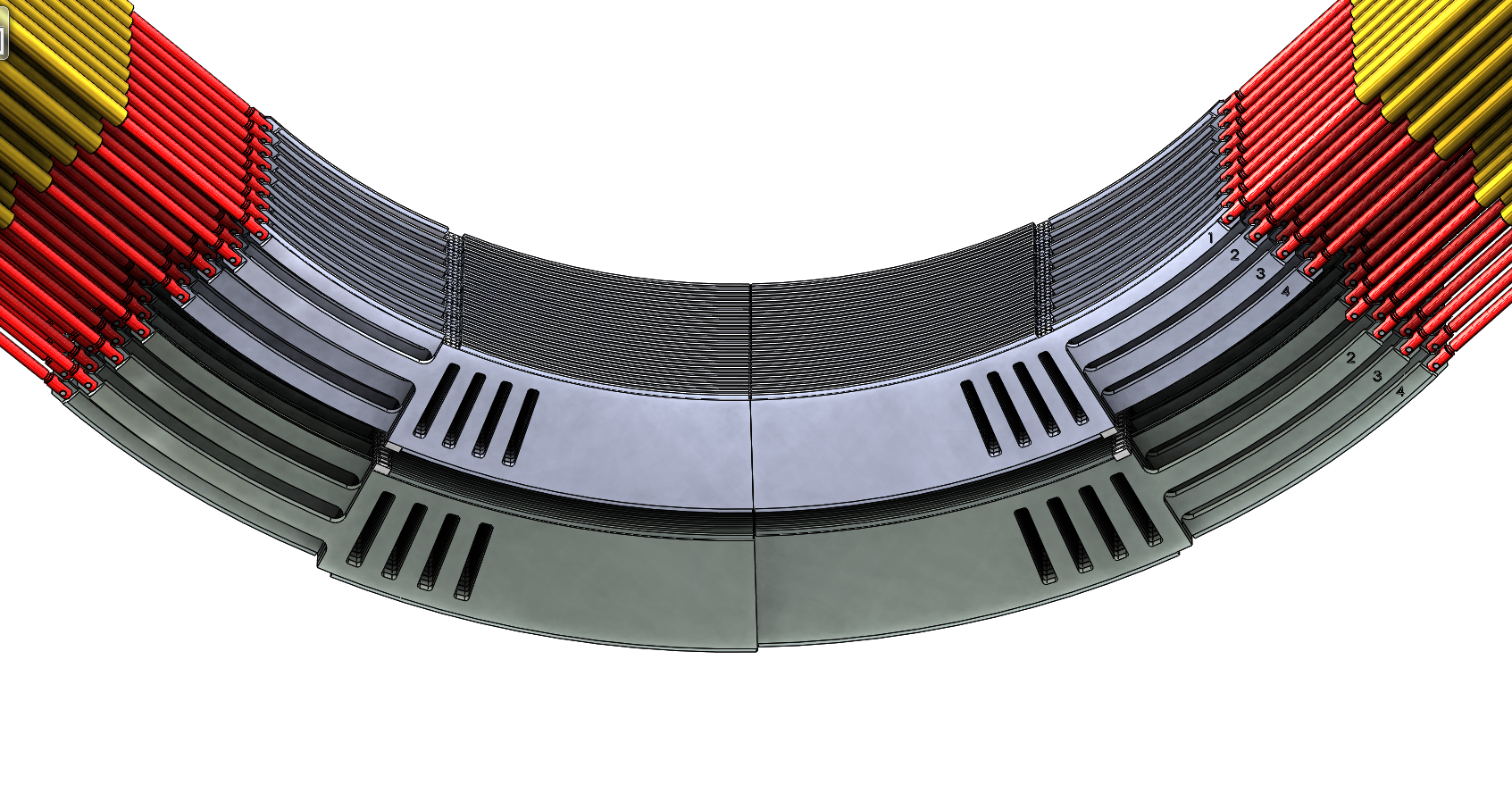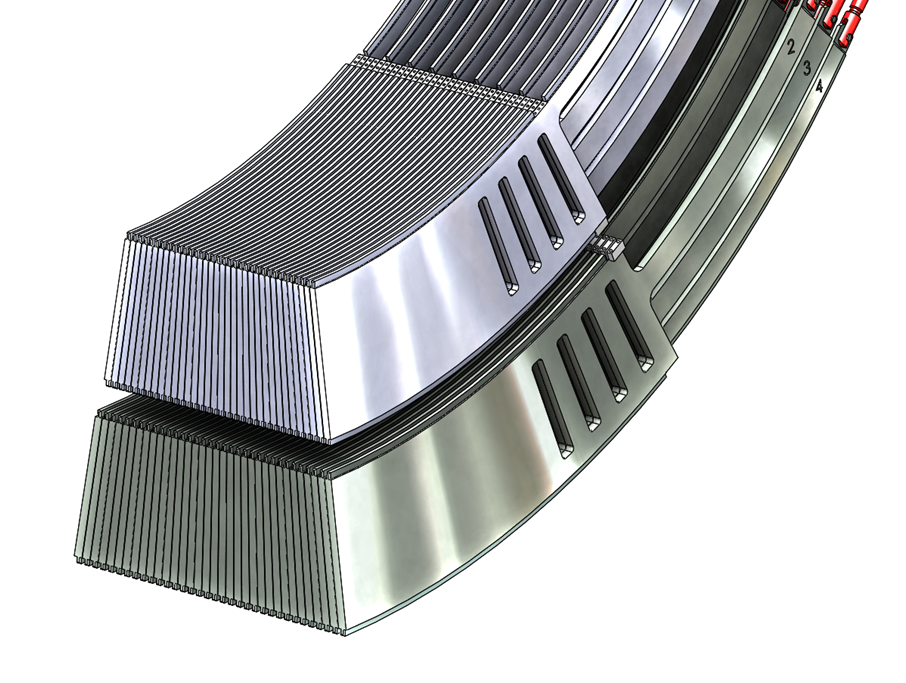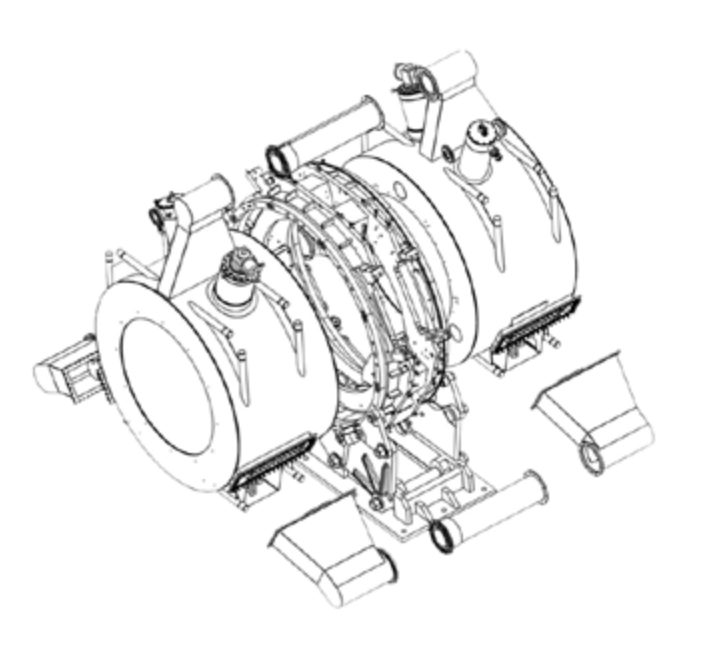
Professionals
Technical Information
The MRIdian Linac system is a unique medical instrument that integrates full-time MR imaging, radiation therapy delivery, and intelligent software automation. Using the MRIdian Linac system, clinicians can see soft tissue, visualize and adjust the dose, and gate therapy—all in real time, on live anatomy, without invasive markers or procedures, and without exposing the patient to the additional ionizing radiation that is common with other imaging modalities.
The MRIdian Linac system includes:
- A rotating gantry assembly with linac and multileaf collimator.
- A split-magnet MRI system for volumetric and multiplanar soft-tissue imaging.
- A patient couch, two in-room couch control panels, and a laser positioning system to facilitate initial patient setup.
- A control console, located just outside the treatment room, to start and stop treatment and monitor status.
- An operator console for MRI acquisition, patient positioning, dose prediction and reoptimization, and real-time tumor tracking.
- Integrated treatment planning and delivery software for creating treatment plans and managing the treatment delivery process.
- A planning station for designing structures and constraints and planning and optimizing treatments. Plan review may be conducted remotely.
- A database server containing patient and machine data used by the system.
Radiation delivery system
Radiation is delivered from a compact inline S-band 6 MV standing wave linac with side coupled cavities. The flattening filter free linac is designed to deliver 600 cGy/min.
The highlight of the MRIdian Linac design is the patented magnetic and RF shielding that isolates the workings of a linac and the MRI system from each other.
A Linac emits RF energy that may interfere with the MRI image acquisition process and affect MRI image quality. MRIdian Linac uses copper shields enforced with carbon fiber for RF shielding. The combination of the materials reduces RF leakage from the linac to almost zero, ensuring zero impact on the MR image quality.
The linac gantry is located in the central gap of the split super conducting magnet. The ViewRay team has developed specialized magnetic shielding technology consisting of concentric steel shells that create a central magnetic void at the linac components, in the otherwise uniform magnetic field of the MRI.



The linac is equipped with a 138-leaf double focused double stacked multi-leaf collimator (MLC) with minimum penumbra to shape the beam for precision radiation therapy treatments. A double stack double focused 138 leaf MLC (34 leaf pairs – upper stack, 35 leaf pairs – lower stack). Each leaf projects with a nominal width of 8.30 mm at 90 cm SAD. The double stack MLC uses an offset between the top and bottom stack to achieve an effective leaf width of 4.15 mm at 90 cm SAD. The MLC is designed to project maximum field size up to 27.4 cm x 24.1 cm and minimum field size of 0.415 cm x 0.2 cm at isocenter.
0.35 Tesla magnet with superb image quality without distortions
The MRI component of MRIdian Linac captures soft tissue images of the patient’s body simultaneously during treatment. The MRI system has been engineered to be able to produce high-quality images using a low field strength 0.35 Tesla magnet. One of the key benefits of this design is that it provides optimal field strength for radiation therapy. The 0.35T field strength is the optimum field strength as it minimizes images artifacts and RF induced tissue heating to a clinical insignificant level.
MRIdian Linac’s low field MRI allows for geometrically precise images, without susceptibility distortions or chemical-shift artifacts, and accurate dose distributions. Furthermore, MRIdian Linac’s 0.35 Tesla field strength does not heat the patient during uninterrupted imaging. The MRI imaging system fits in standard vaults and has a unique pop-apart design to enable non-destructive rigging.

Full-featured treatment planning and delivery software
With the MRIdian Linac system’s built-in treatment planning and delivery software, clinicians can create and deliver treatment plans and perform quality assurance (QA) procedures efficiently, accurately, and safely.
A unique aspect of the MRIdian system is its ability to allow physician prescriptions to define the parameters of the treatment process. Along with the dose, constraints, and objectives, the physician defines whether it is allowable, mandatory, or not allowable to:
- Image the patient daily
- Perform on-table dose prediction
- Enable automatic beam gating